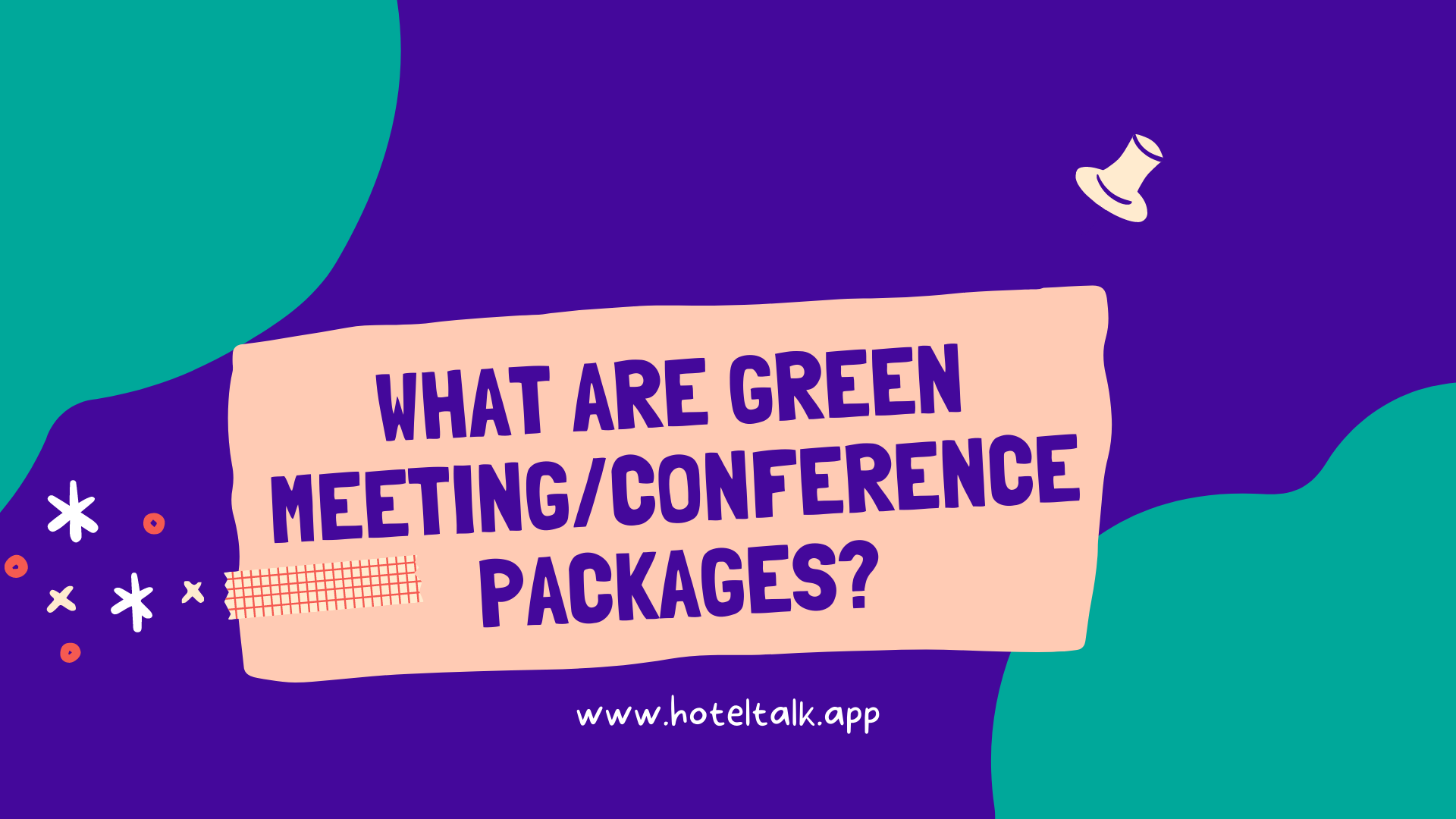It’s common place nowadays. When organising an event you can choose from “normal” packages or choose a “green meeting” or “eco-friendly” meeting package.
These packages attempt to differentiate themselves with various inclusions that are not commonly offered. In a blatant example of green washing I recently saw a press release of a 5 star hotel in Shenzhen regarding their green meeting package. They mention how they serve water in glasses rather than bottles, yet the accompanying photos shows a perfectly staged meeting room with plastic bottles at each setting!
While the concept is somewhat opportunistic, these packages do provide sustainable alternatives. The question is though, why aren’t ALL packages green?
In general, green package inclusions are not only great for the environment, they save hotels, event and MICE organizers crucial costs, adding to the bottom line. Rather than promote these packages separately, making their inclusions the norm will reap the mentioned benefits and show that these service providers are committed to sustainable business at the same time.
The following are some tips for the industry to move towards taking the green out of meetings and making it the norm. Some of them are regularly mentioned as green package inclusions and some go beyond.
1. Discourage printed marketing, promotional and advertising collateral:
Promotional, marketing and advertising go hand in hand with running any event. Sponsors and stakeholders are key to their success, but their glossy printed material eventually ends up in the bin.
The alternatives: Only provide a reusable USB drive to delegates and participants and or place marketing and promotional material in the cloud on your conference website for downloading. This makes for both a sustainable environmental as well as business solution. The longevity of and ability to share the marketing, promotional and advertising message is enhanced giving greater exposure to your sponsors and stakeholders.
2. Stop giving out Reusable bags:
I have 20 of these “eco-friendly reusable bags” at home! One can only use so many. While the concept has the best of intentions it’s been overdone and now defeats the purpose. On top of that, they have a carbon and environmental footprint attached to their production and eventual disposal.
The alternative: Try to achieve a zero bag event.
3. Participant Name Badges and Labels:
Although it’s common place now for plastic sleeves to be reused and returned to event organisers, most still provide participants with name labels that are thrown away after the event. Depending on the size of your event, that can mean hundreds or thousands of labels that have used ink, printer energy and paper to produce.
The alternative: Make it a point to have all participants use one of their business cards to slip into a reusable plastic sleeve. Participants keep their business card at the end of the event and return the plastic sleeve for you to reuse for future events.
4. Set air conditioning and heating temperatures to eco-friendly levels:
Why wouldn’t you? This not only saves energy consumption and therefore costs, it also provides a comfortable environment for participants. I’ve seen this used as a “green meeting package” inclusion on many occasion and can’t understand why it’s not just the norm.
The alternative: Make it company procedure to ALWAYS set temperatures at optimal levels.
5. The 3 Forbidden S’s – Single Serve Sachets:
Don’t use single serve sachets. They cost you more money to purchase compared with buying in bulk and have a far greater impact on the environment during both production and disposal phases. Most sachets not only produce paper waste they are also plastic and or metallic coated inside which makes it difficult for them to degrade in landfills.
The alternative: Provide sugar, salt, pepper and the like in bowls or dispensers only. The same applies to individually wrapped candies.
6. I am not a plastic bottle!:
Given the success of the I am not a plastic bag campaign, perhaps all glasses should have I am not a plastic bottle printed on them. Plastic bottles are a no no. It goes without saying that their production, transportation (often imported from overseas) and eventual disposal or recycling carries with it a big carbon and environmental footprint. Not only that, each bottle has an embedded water footprint and it takes more water to produce a bottle of water than is contained in one. But wait, that’s not all! Ever taken stock of how many partially consumed bottles you see at participant stations after an event? This all amounts to water wastage.
The alternatives: 1. Provide participants with glasses and pitchers of filtered water from the tap. They only pour what they want (for example half a glass rather than wasting a whole bottle) and you save costs while avoiding the environmental impact associated with plastic bottles. 2. Don’t use paper covers on glasses, they are not necessary, add to landfill and cost you money.
7. Napkins:
As the saying goes, “build and they will come.” The same applies to “provide and they will take!” Putting out disposal paper napkins and serviettes unnecessarily encourages their usage. Other areas of consideration are their placement under food and drink items and the number of napkins provided.
The alternative: 1. Don’t place disposable napkins unnecessarily on plates and saucers under food and beverage items if it’s only for presentation purposes. 2. When providing them, don’t supply more than one per person (some procedures stipulate staff give out one per food item). 3. Wrap cutlery with napkins where possible to ensure only 1 is taken. 4. Where possible, make use of reusable/washable napkins instead.
There are many other typical green meeting package inclusions, the purpose of this article was not to list them all but to provoke thought and provide some new approaches.
